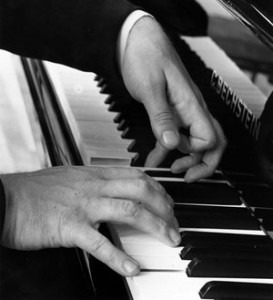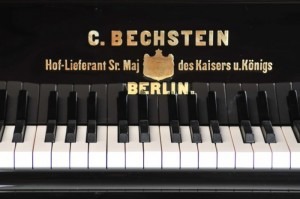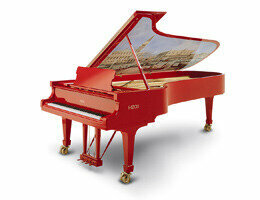
Richter’s hands
Credit: http://media.npr.org/
Sviatoslav Richter
Pianists have a curious relationship with pianos: unlike other musicians, who take their own instrument with them wherever they play, the pianist is expected to arrive at the venue and accept the instrument provided. In international venues such as the Musikverein, Wigmore or Carnegie Halls top class concert instruments are beautifully set up, and the soloist will spend some time with the technician before the concert discussing any adjustments to be made to suit that performer’s taste and needs and to meet the requirements of the repertoire being performed. The tuners and technicians who work with concert artists and instruments are highly skilled people, sensitive to the idiosyncrasies of instrument and performer. Once upon a time, in the days before air travel, the pianist might travel by ship or by train with his own instrument. There is some lovely footage in Bruno Monsaingeon’s film about Sviatoslav Richter showing the great man selecting a grand piano at the Yamaha showroom in New York ahead of a performance. These days such executive treatment is largely afforded only to the greatest. The pianist Gary Graffman, in his book I Really Should be Practising, relates an occasion where he arrived at a concert to find that one of the notes on the piano when depressed sounded with all the subtlety of a gunshot: to remedy this, Graffman simply replaced the action of that note with one seldom-used from the top of the register.

Bechstein grand piano
Credit: http://www.americanpianocovers.com/
But supposing one arrives at a venue to give a concert and the piano is less than perfect? In such situations, a true professional will accept the situation and work with the instrument they are given.
In his memoirs, Richter describes playing on indifferent school pianos in the Russian provinces during the war, forcing him to think beyond the instrument. The sound of the piano could not be changed but through his extraordinary imaginative powers, he could draw the audience along with him and take them to another place, to make them focus on higher things. This has to be our aim, as pianists, when confronted with an indifferent instrument, or one not exactly to our liking. We play, and the best we can hope is that we capture the audience’s attention and imagination, and get beyond ourselves and our ego to convey the meaning and emotion in the music.
Stephen Hough on Choosing a Piano






